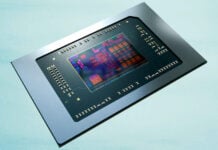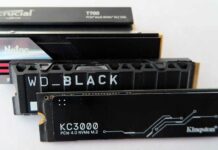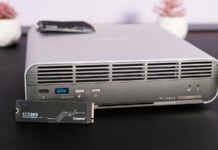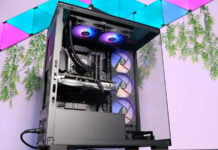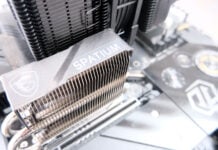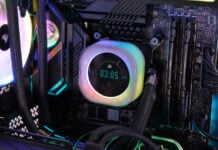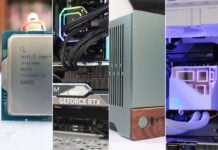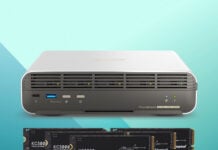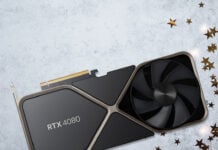Jump to: Models | Performance | Overclocking | Conclusion
The Empire Strikes Back
After years in development, Intel releases its most important CPU architecture in a long time. Known as 12th Gen Core and debuting on desktop first, readers will recognise it by the Alder Lake codename.
12th Gen Core’s architecture is radical insofar as it merges a number of high-performance cores alongside efficient processors in one package. These are referred to as P and E cores, respectively.
To be able to do this, Intel moves 12th Gen Core to what it terms the ‘Intel 7’ process, which has previously been known as 10nm Enhanced SuperFin. The company says this new nomenclature provides a consistent framework for comparing against the processes used by other manufacturing companies such as TSMC.
Intel 7 is very much needed to keep die size and thermals in check. The most powerful interpretation of 12th Gen Core measures approximately 208mm², compared to 281mm² for the previous generation built on an ageing 14nm process, even though the new chips have far greater compute resources on tap. Put simply, Intel 12th Gen wouldn’t exist in its present guise if hewn on anything other than this leading-edge process.
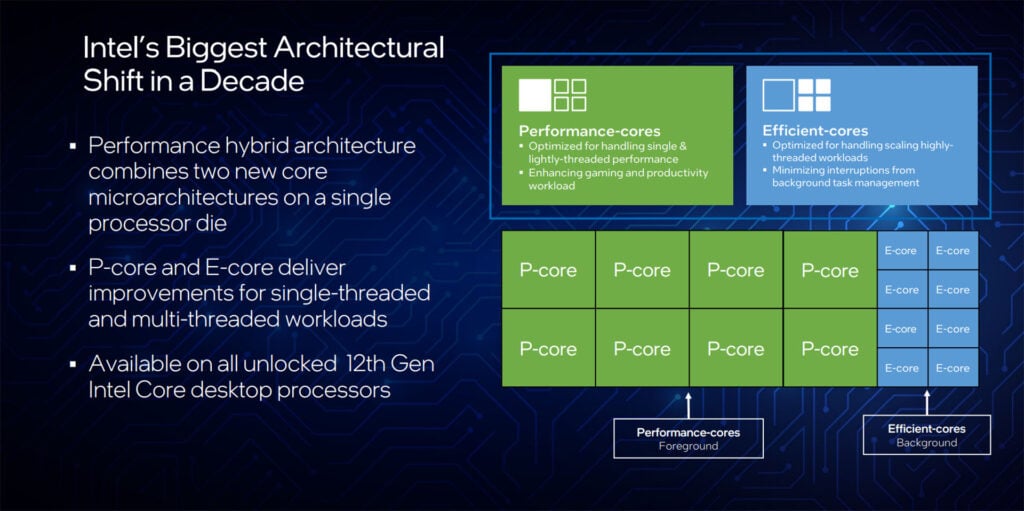
P cores are built on the latest high-octane microarchitecture known as Golden Cove. It is the direct successor to in-market designs such as Sunny Cove, Willow Cove and Cypress Cove. Key improvements include going wider on the allocation width and execution ports, deeper with respect to reorder buffers and schedulers, and smarter through greater execution parallelism. The sum of these efforts, says Intel, is a 19 per cent performance improvement over the same speed chip based on 11th Gen technology.
E cores, meanwhile, take their cue from Intel’s power-efficient Gracemont design. Created specifically with energy in mind, these cores don’t feature hyperthreading, use a simplified microarchitecture, and also don’t scale quite so high in terms of frequency.
The premise is for 12th Gen Core chips to use their powerful P cores for single- or light-threaded tasks where responsiveness is paramount, activate E cores for background tasks, and then combine the two in situations where maximum performance is desired, which is typically in all-core rendering applications.
Augmenting the cores, Intel bolsters their performance potential by increasing on-chip cache sizes. For example, every P core’s L2 cache is 1.25MB, compared with just 512KB on 11th Gen, E cores are clustered in groups of four and have access to 2MB between them. Backing all of this up is up to 30MB of L3 cache that can be accessed by either P or E cores.
Keeping track of which application thread goes where, Intel uses a behind-the-scenes technology known as Thread Director to help the operating system make the most efficient choice. It runs most smoothly under Windows 11, though ought to function well enough on Windows 10, says the company.
Drilling Down On Models
From the off, there are six processors sheltering beneath the 12th Gen Core umbrella. Branding is familiar as these chips, grouped in three sets of two, accommodate Core i5, Core i7 and Core i9 models.
All chips belong to the K-series family. This means they are free of artificial constraints such as multiplier locks. Put simply, they can be overclocked and tinkered without restraint.
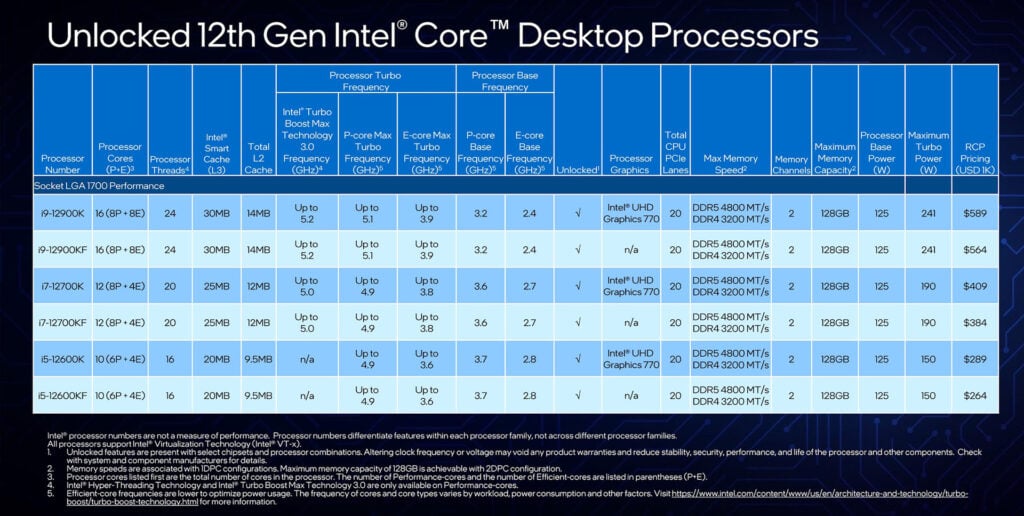
Core i5 chips each have a total of 10 processor cores, split between six P and four E – remember the minimum amount of efficient cores is four. The combination gives rise to a total of 16 threads as the P cores feature hyperthreading. A closer look at the frequencies reveals the P cores scale about 30 per cent higher than E. They also perform more work per clock cycle thanks to their enhanced architecture, so it is difficult to know exactly how much both sets contribute to overall performance.
That is not to say the E cores are mere design afterthoughts. Intel says a single 12th Gen E core has the same thread-processing performance as a 10th Gen chip’s. Small yet potent.
Moving on up to the Core i7 range, Intel adds two additional P cores, extra cache, and marginally higher frequencies. Like other models, there is a K and KF processor available. The key difference between the two is the latter does not sport integrated Intel UHD Graphics 770 and therefore needs to be paired with a separate graphics card.
At the top we have the Core i9 duo. Representing the best in breed by including eight P cores and eight E cores, the chips can process up to 24 threads in one go, split 16 for the hyperthreaded P and eight from E.
Intel also takes this opportunity to change the way it describes chip power. All six chips share what is referred to as a 125W Processor Base Power (PBP), which, as the name implies, defines the baseline power characteristics. Activating this level reduces core frequencies by a healthy degree, though Intel doesn’t publish exactly what that is. PBP is of most use to OEMs who build machines to withstand specified thermal limits, so you might see Dell and HP use it by default.
Maximum Turbo Power (MTP), meanwhile, varies between processors and defines the level at which Intel is comfortable running the chips at in their enhanced, enthusiast-friendly state. Similar to PL2 in previous Intel-speak, MTP offers longer-term sustained performance. Note that neither terms reference traditional TDP.
Platform
Don’t let the talk of P and E cores distract you from the knowledge that 12th Gen Core is a whole platform upgrade, not merely a fundamental CPU advancement. The six chips use a new socket known as LGA 1700 which is naturally incompatible with any other Intel chipset.
Part of the reason why Intel shifts sockets has to do with the smarts surrounding the processor. 12th Gen core CPUs house a new memory controller capable of working with either established DDR4 or new DDR5, albeit not on the same board. DDR5 offers higher frequencies for greater bandwidth on the dual-channel architecture. Operating with official specifications of DDR5-4800 and scaling much higher once overclocked, it is not all rosy: the new technology is compromised by higher latencies.
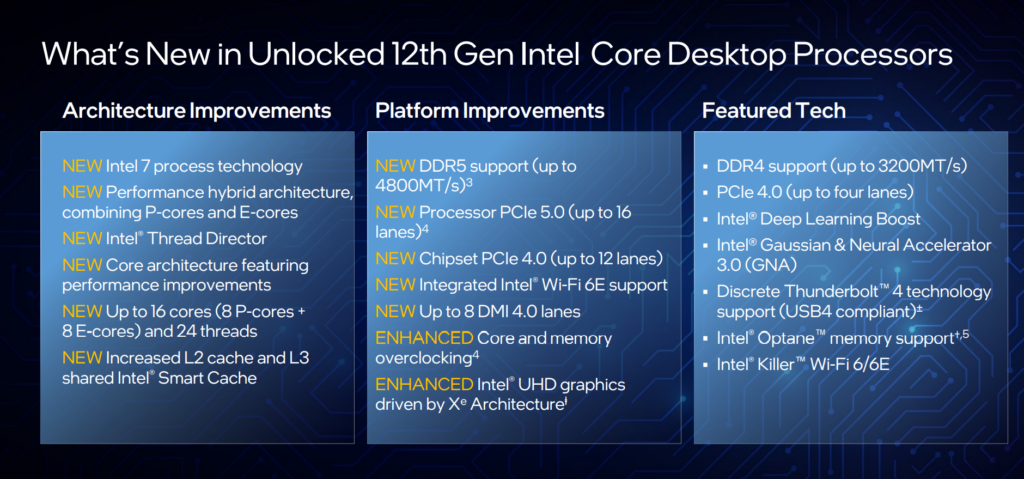
Each chip has 20 lanes running off it. 16 of these are PCIe 5.0 compliant, though there are no graphics cards presently in market that can take advantage of the 2x increase in bandwidth. A further four PCIe 4.0 lanes are earmarked for M.2 storage.
Intel pairs the chips with all-new 600 series motherboards. Gravitating towards the enthusiast first, Z690 is launched alongside. It connects to the chip via a double-speed PCIe 4.0 x8 interface and has a total of 28 expansion lanes at its disposal, split between 12 PCIe 4.0 and 16 PCIe 3.0. It’s a shame Intel hasn’t gone the whole nine yards and opted for PCIe 4.0 everywhere.
Price
It’s abundantly clear Intel is looking to prise momentum away from AMD Ryzen through what looks like semi-aggressive pricing. For example, the headline chip, Core i9-12900K, arrives at retail armed with a $589 price tag, translating to around £550 here. Significantly cheaper than the $799 (£700) asked by AMD for the Ryzen 9 5950X that Intel pits it against, and a little more than the £500 for the Ryzen 9 5900X, yet you still cannot get carried away by headline pricing.
Such thinking is brought into sharper focus with the knowledge that whilst other chips are readily available at, or close to, their mooted recommended pricing, Core i9-12900K is typically retailing for $650 or so.
It’s absolutely wise to consider the total cost of platform – CPU, motherboard, memory, cooler, etc. – before drawing hard-and-fast conclusions. Nevertheless, scoping out the rest of the 12th Gen stack reveals what appears to be solid value. Of course, any notion of value cannot be ascribed before understanding benchmarks… and that’s exactly what we’re here for.
With the test system busy running the Core i9-12900K for the last week, do read on to find out just how fast it is.
In-depth testing methodology is found on the second page of this review.
CPU Performance
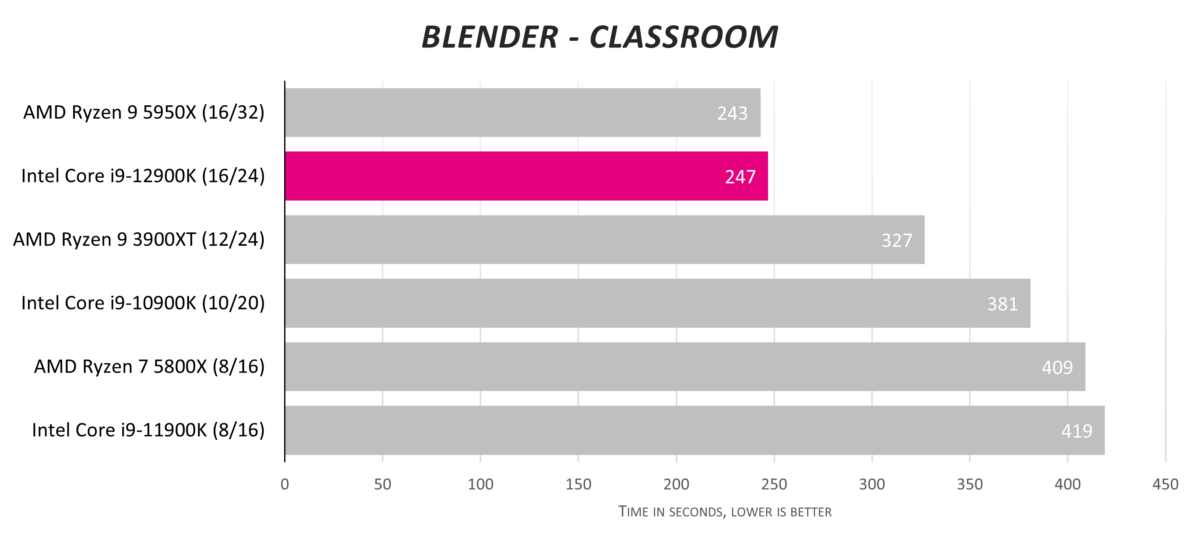
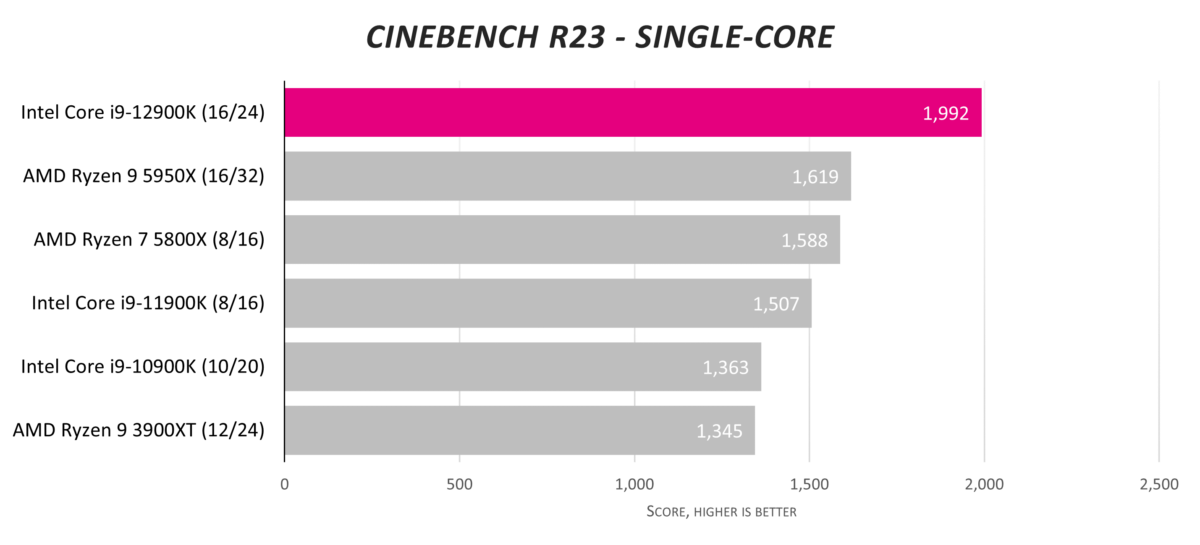
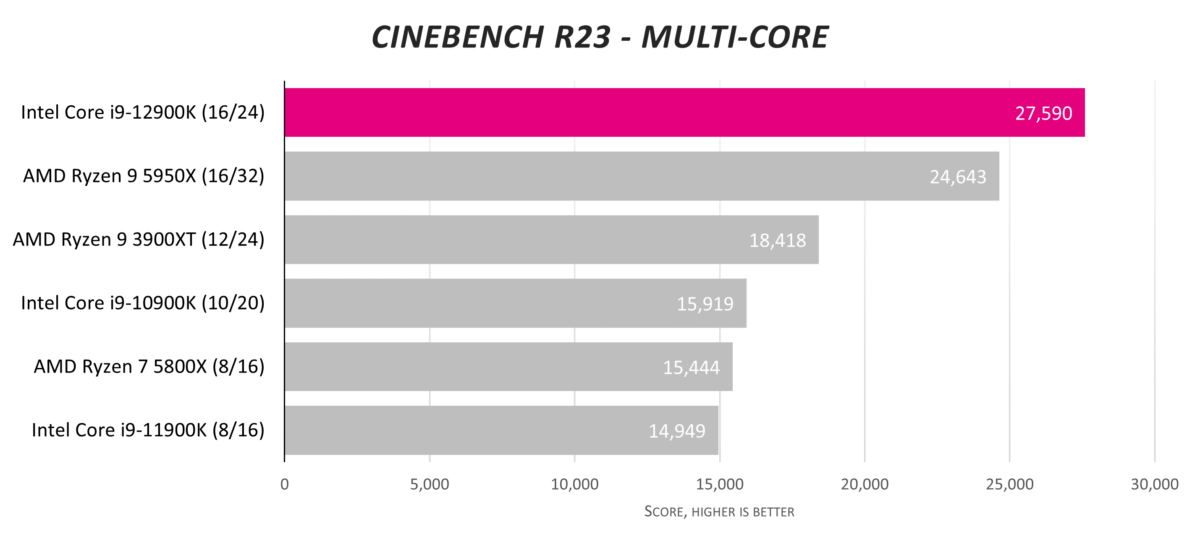
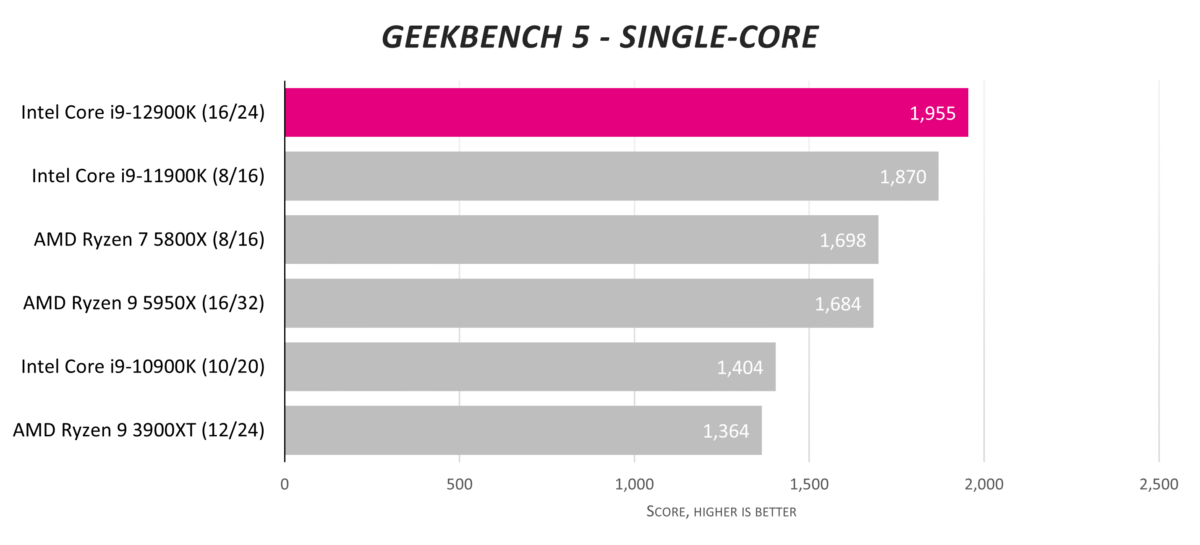
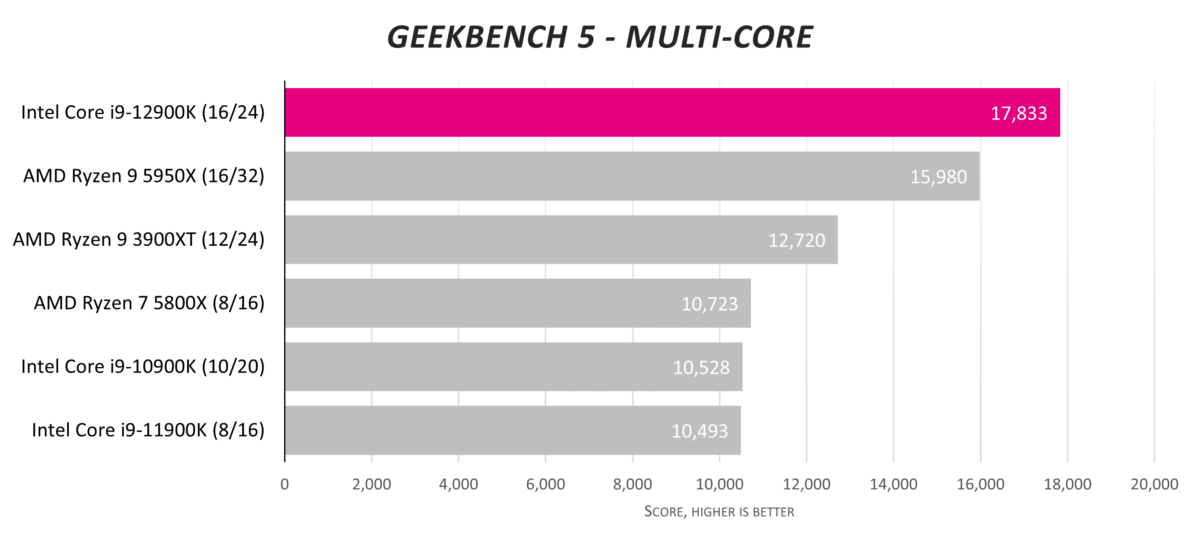
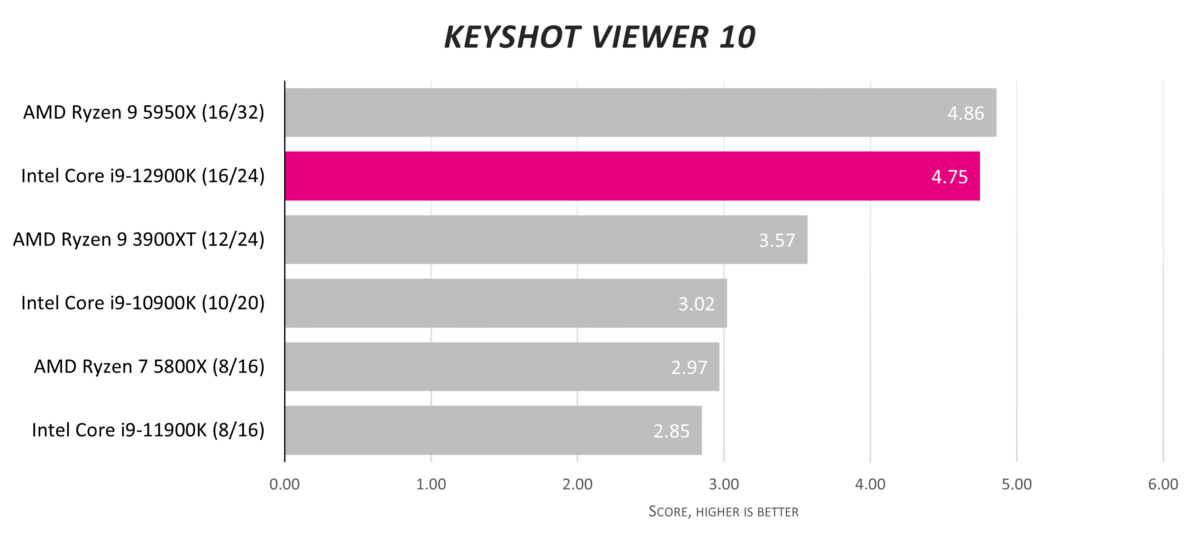
Intel Core i9-12900K sprints out of the gates with some impressive performance numbers. The intimation was that advancements in architecture would yield an ISO 19 per cent gain over the previous generation; that much is at least true in single- and low-thread tests, evidenced by the stellar results in Cinebench 1T and Geekbench single-core.
Core chips remain impressive in light-load applications because they typically boost to higher frequencies than Ryzen rivals. Focussing on cores, threads and frequency in equal measure, Core i9-12900K’s 24 threads hold up well against the best Ryzens.
It’s not all perfect, however, as performance in, say, Keyshot isn’t as robust as expected. Nevertheless, the best CPU from Intel to date is a powerful performer.
Memory Performance
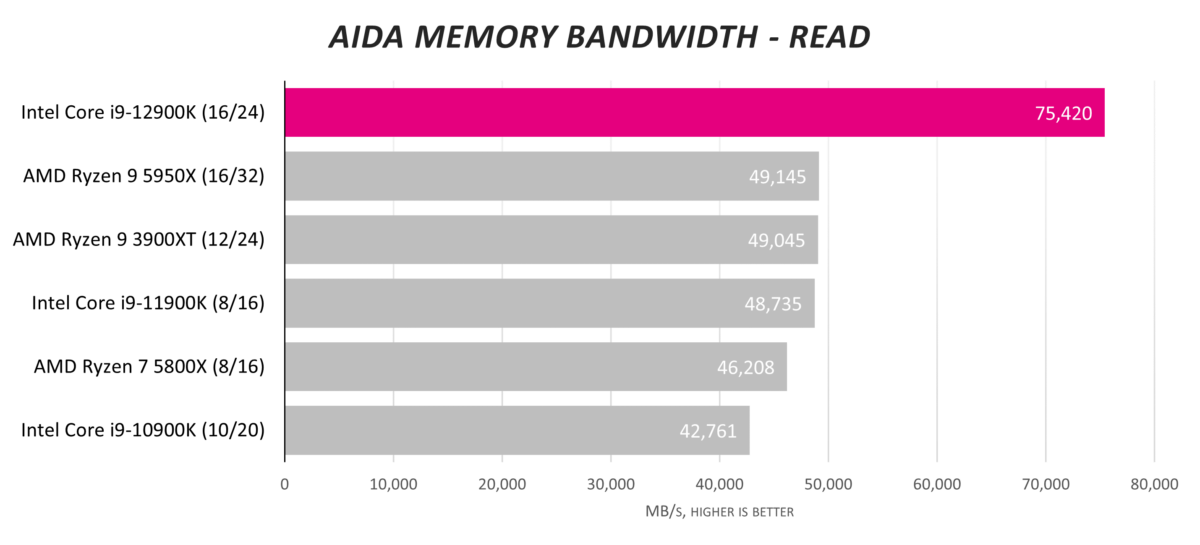
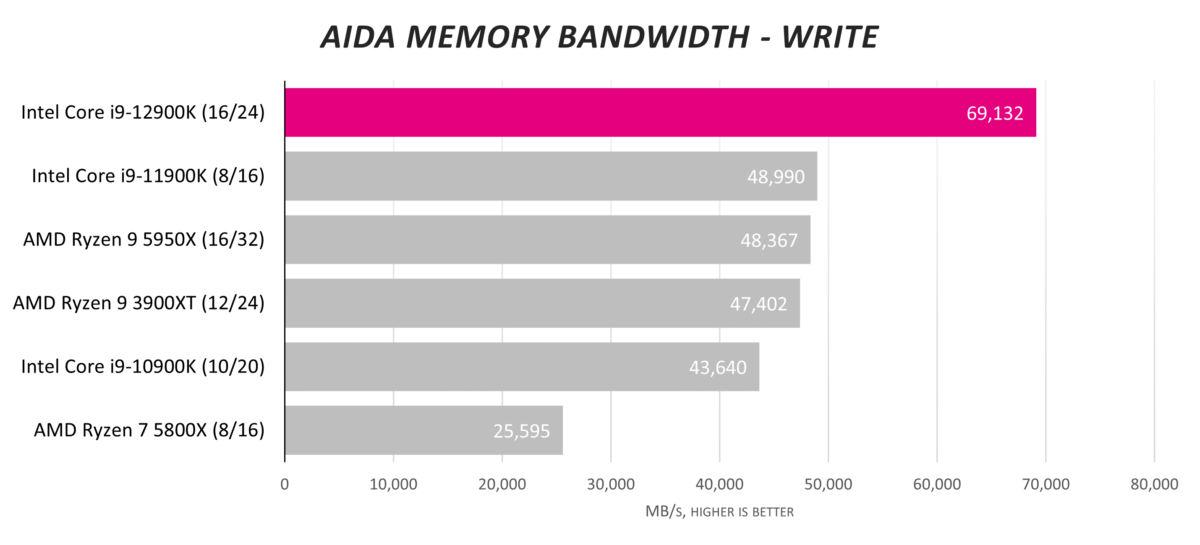
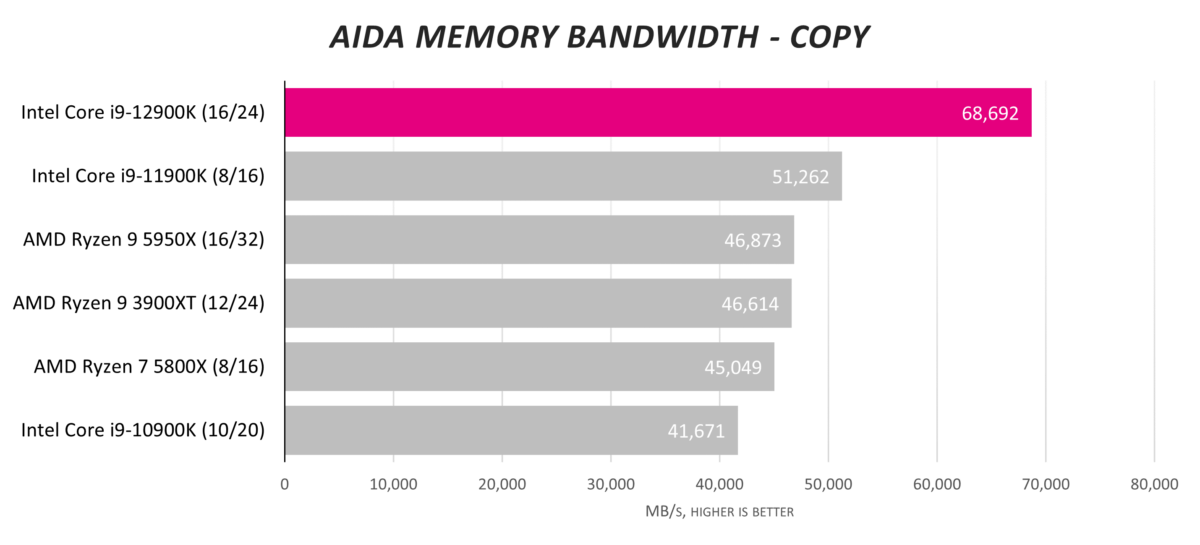
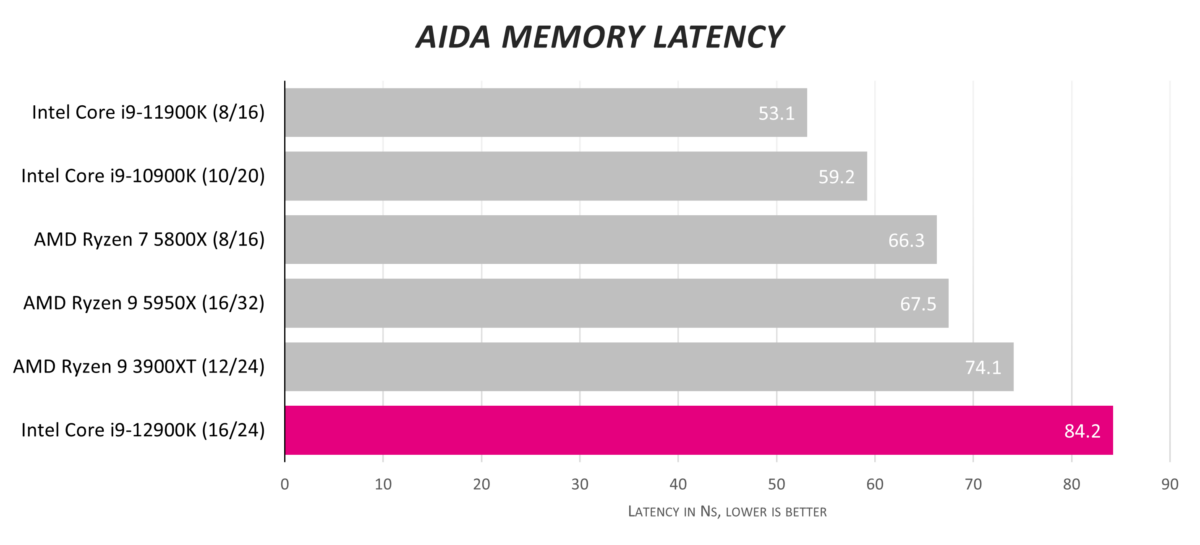
Intel is a shoo-in for the memory tests; running with new-fangled DDR5-4800 ensures dominance in the first three benchmarks, and this lead will only go out further once enthusiast kits become widely available.
The immediate downside to DDR5 is, as conjectured, latency, which is the worst of the bunch. The way in which memory affects application performance is determined by how sensitive the workload is to the initial request from external RAM. Once it streams, however, the oodles of bandwidth is a boon.
One shouldn’t read too much into these graphs as the latest Core chips are suffused with plenty of on-chip cache, reducing the need for many workloads to spill out to those expensive DDR5 sticks.
System and Gaming
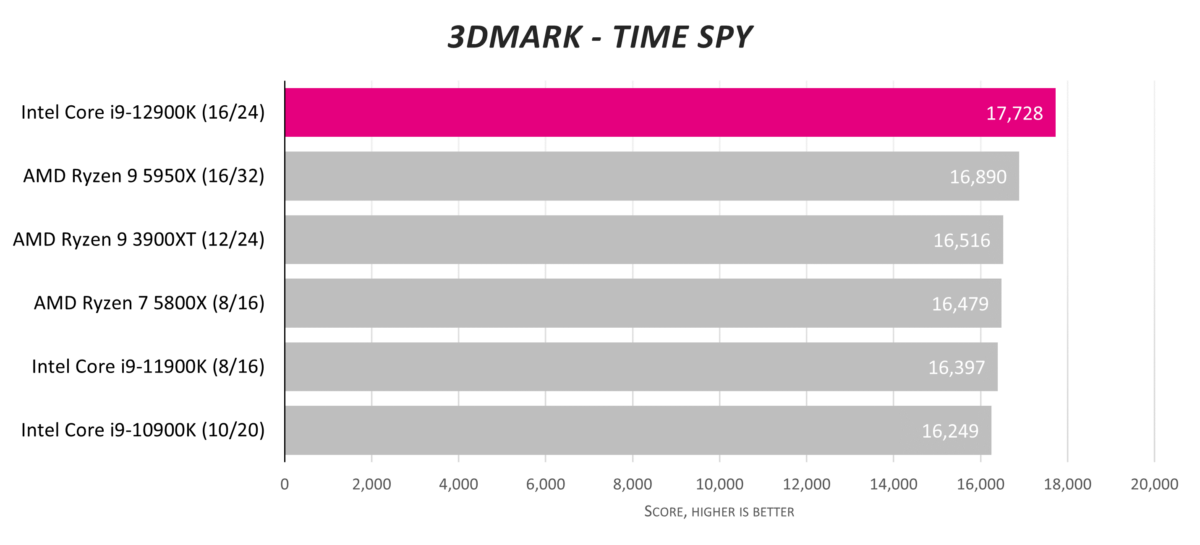
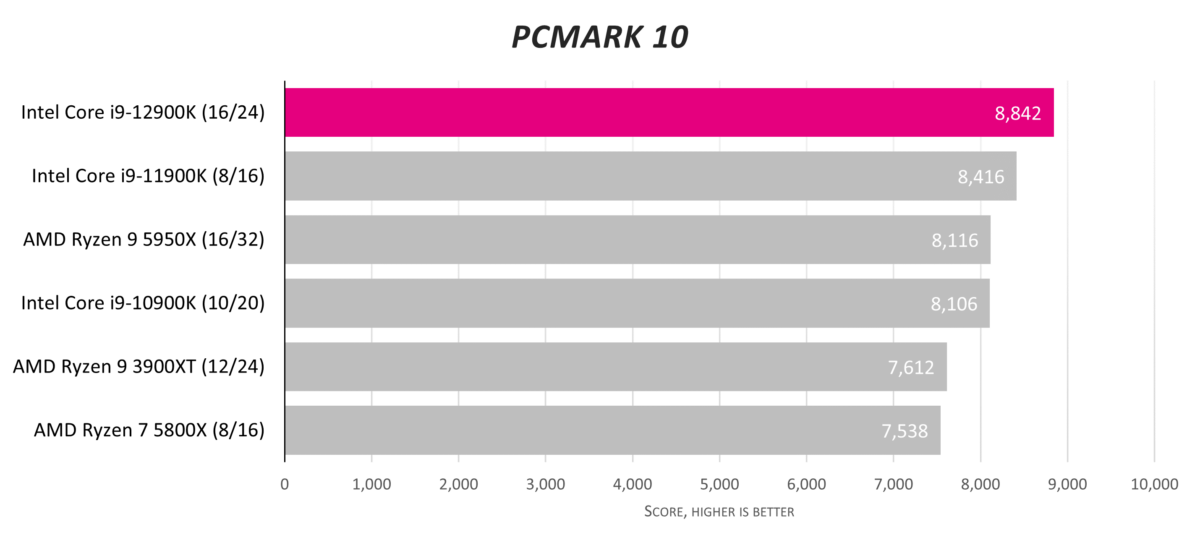
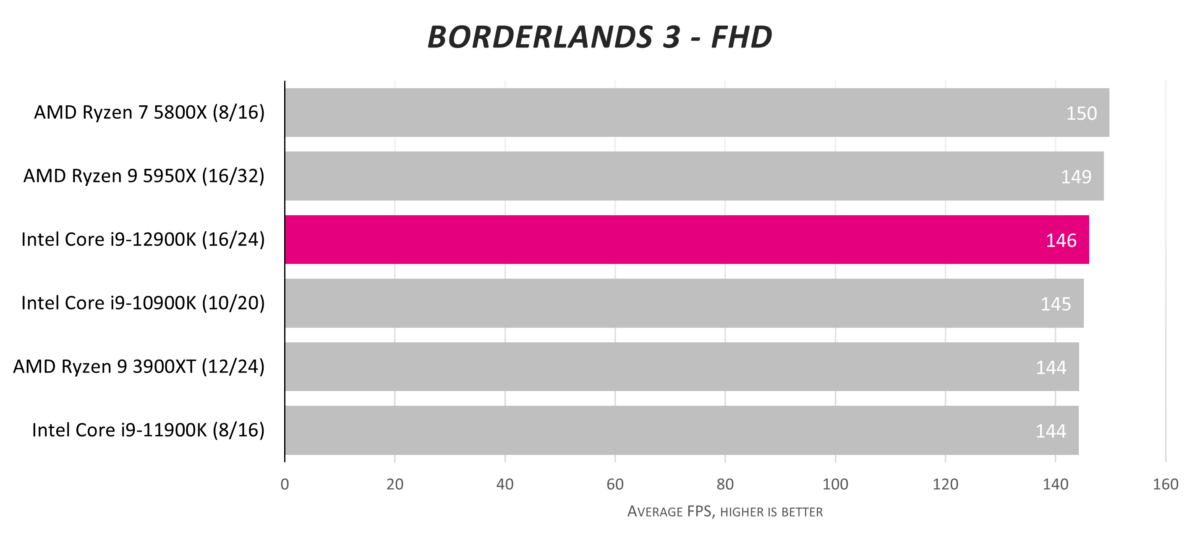
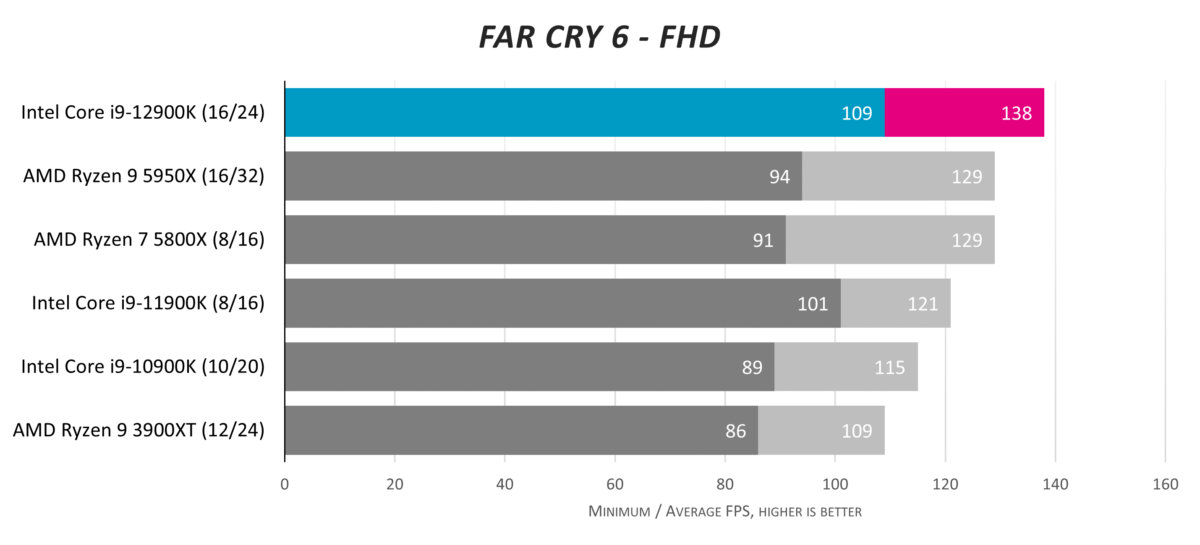
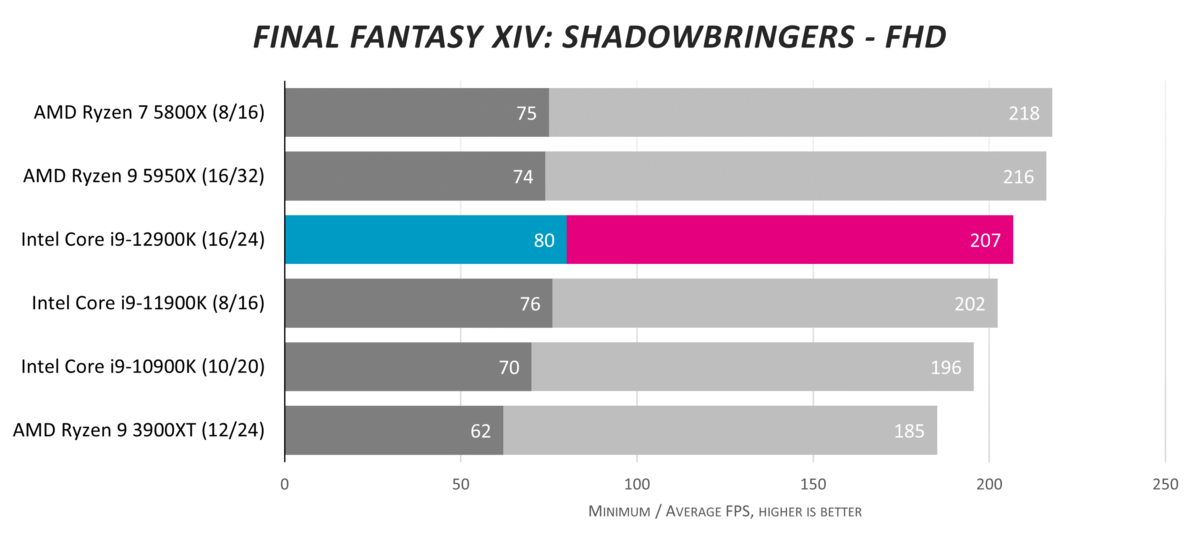
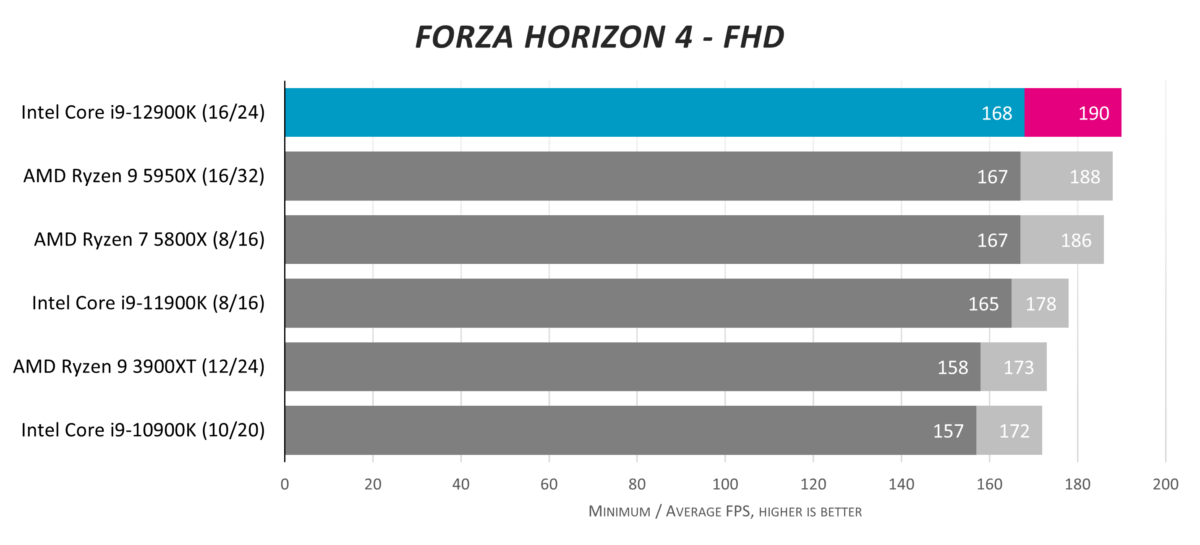
Core i9 continues to shine in system-related tasks. That said, the dual-core nature of Alder Lake does become apparent in some tests. For example, in PCMark 10, the Core i9-11900K’s frequency is adjudged to be relatively consistent over the course of the test. Core i9-12900K’s moved about a lot, intimating the workload is shifting between P and E cores on a frequent basis.
The latest Core chip mullers the competition in Far Cry 6 – likely to become a poster child for Alder Lake – and holds its own against other performance processors across three further games. Performance isn’t as staggering as some may have expected, so perhaps the lower-frequency E cores are getting into the action more than they need to.
The bottom line is that you needn’t worry about gaming performance from 12th Gen Core.
Vitals and Overclocking
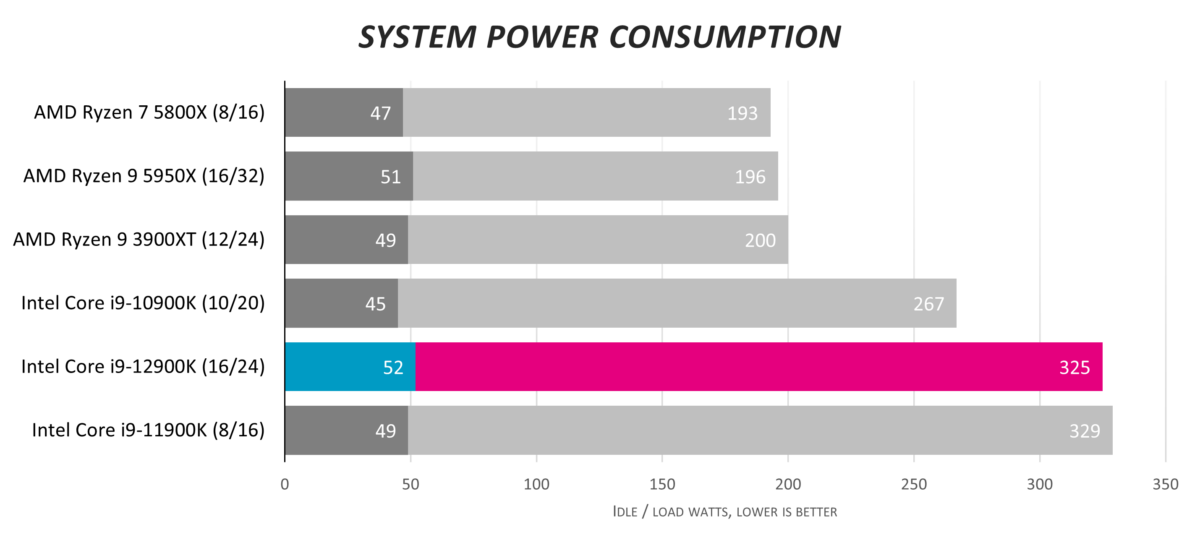
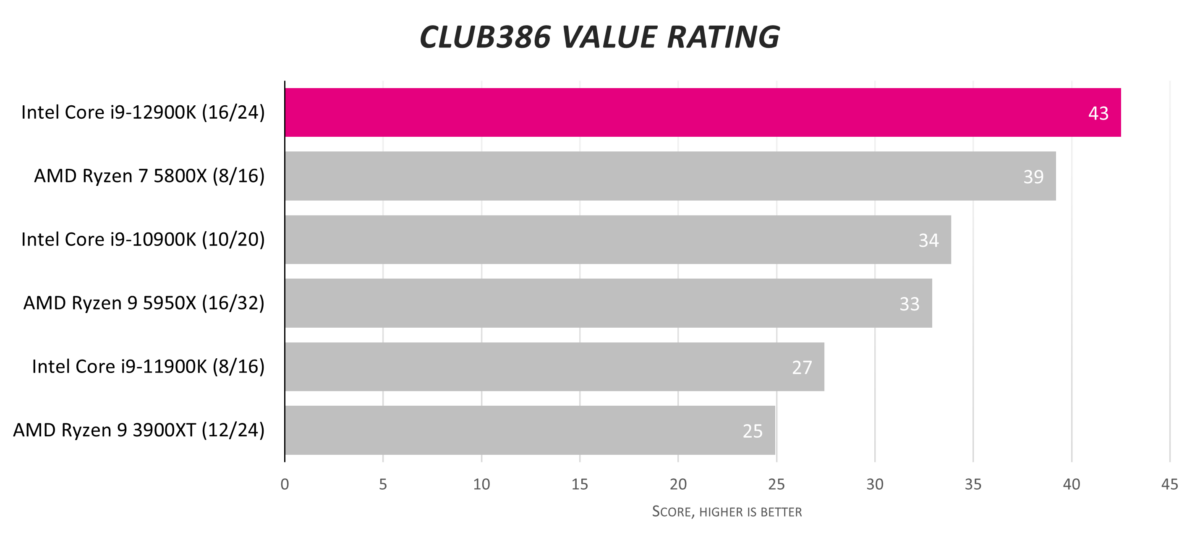
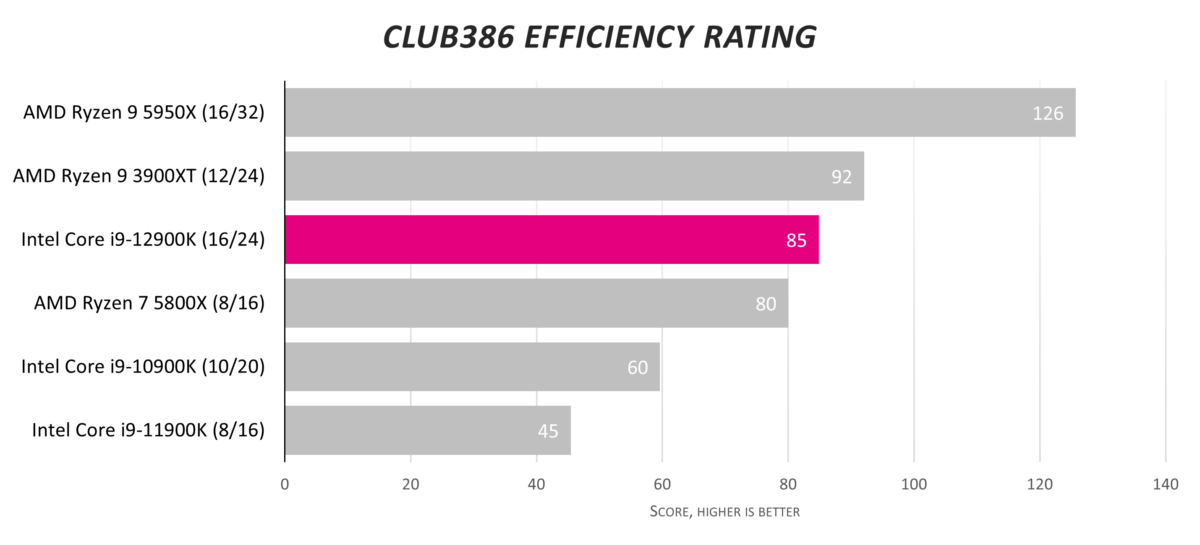
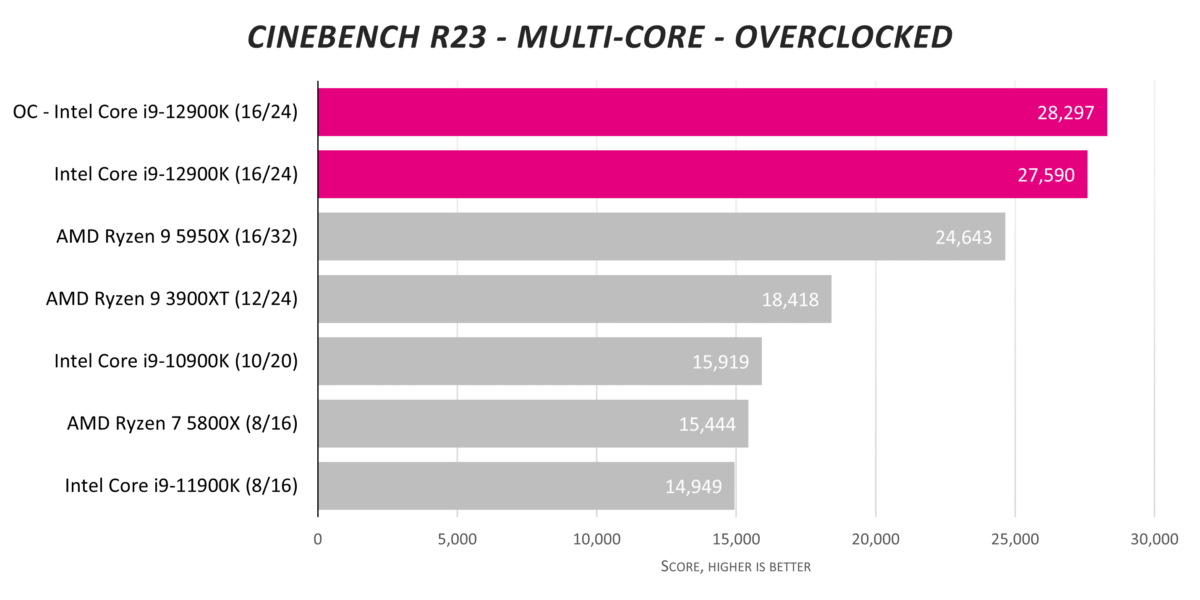
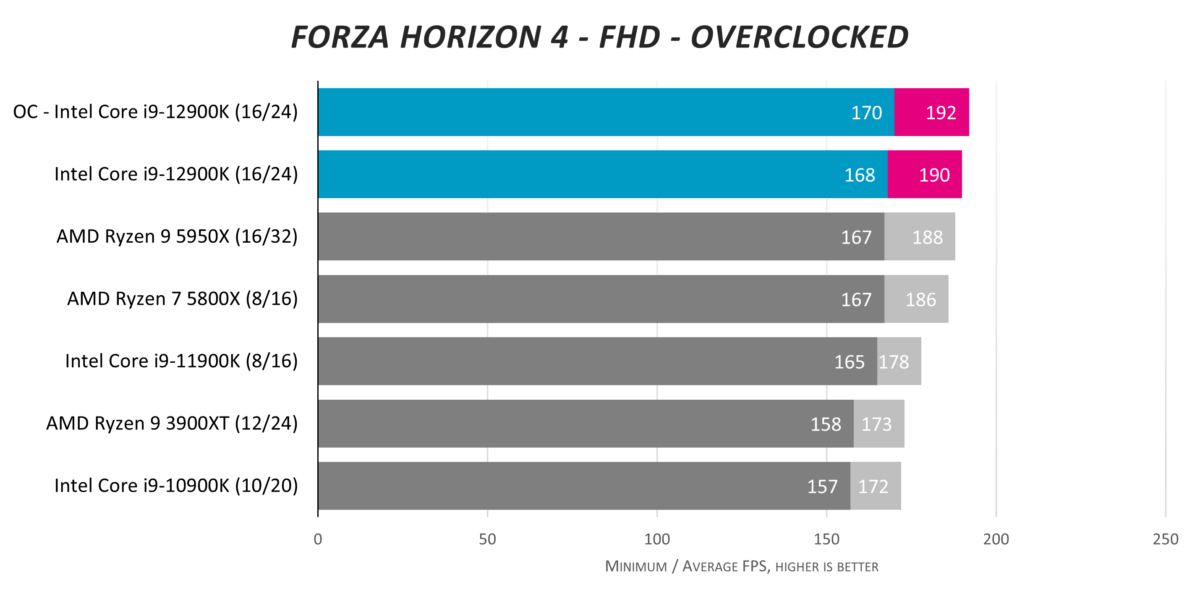
Having a 241W MTP limit is great for getting those cores singing at higher frequencies but clearly not optimal with respect to energy expenditure.
Diving further into each aspect, Core i9-12900K does really well in the value metric, as its amenable street price looks good when set against table-topping performance. The Ryzens have the Core’s number in efficiency; they pull a lot less juice when running flat out.
Considerable smarts baked into the chip offers behind-the-scenes boosting when set to the 241W MTP. Manually going higher is of limited value as our sample resisted urges to run at higher than 5.1GHz on P cores and 4.1GHz on E cores.
The uptick in performance is minor in the grand scheme of things, whilst package power consumption spirals to the wrong side of 300W, putting even capable all-in-one coolers under duress.
Unless you have custom loops or a penchant for exotic cooling, it’s best to leave manual overclocking well alone.
Conclusion
12th Gen Core finally sees Intel in a position to challenge AMD’s might in the mainstream desktop space. Going up against formidable Ryzen 9 chips, the all-new hybrid architecture, comprising a mix of Performance and Efficient cores, proves to be a potent weapon.
A three-pronged approach of novel CPU design, better manufacturing process, and a feature-rich platform combines to push the champion Core i9-12900K to the top of most performance charts. Faster than Ryzens in single- and multi-threaded benchmarks more often than not, whilst at least as good in gaming, there is plenty to like here, even if power needs to be ratcheted up to over 200W for this magic to manifest.
Yet there are further provisos to be aware of. Intel’s decision to abandon the age-old Skylake architecture is a sage one, but in doing so requires the enthusiast to invest in a new motherboard, most likely DDR5 memory, and cooler. That’s okay if buying a pre-built system as all the hard work is done for you, but may prove to be too great a burden for readers looking to merely update their existing mainstream rigs.
Being even handed, AMD isn’t resting on its laurels, either, as plans are afoot to release 3D V-Cache-equipped Ryzens early next year that promise a healthy uptick in performance through a new on-chip memory hierarchy.
In truth we have only touched the surface of what 12th Gen Core i9 can do, but as an initial look at Intel’s new mainstream performance platform, there are myriad reasons to think it will sell well.
Serious competition is present once again in the PC desktop space, led by the battle between Core and Ryzen. Intel has thrown the proverbial kitchen sink at AMD, but there’s no clear-cut winner… apart from you, the enthusiast.

Intel Core i9-12900K
Verdict: Intel 12th Gen Core brings the chip veteran right back into the high-performance desktop PC conversation with a bang. Exciting times ahead.
Pros
Hybrid architecture works well
Superb gaming performance
Productivity beast
Forward-looking platform
Competitive pricing
Cons
High power consumption
Requires new motherboard
Club386 may earn an affiliate commission when you purchase products through links on our site. This helps keep our content free for all. Rest assured, our buying advice will forever remain impartial and unbiased.





